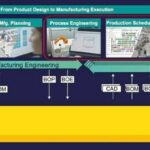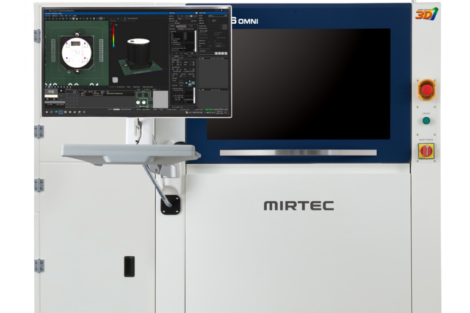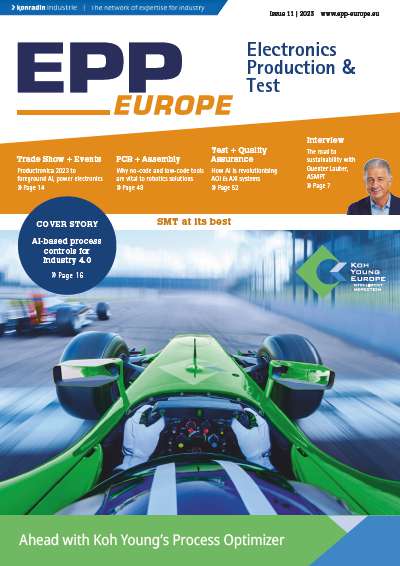Even before Covid-19, staffing was a challenge. Then, with the arrival of the great resignation, the challenge became even more acute. Today, the convergence of various global events and industry trends is increasing the complexity of electronics manufacturing, and this is having a knock-on effect on recruitment. Understanding how each factor impacts the workforce is vital to finding effective solutions to labour shortages, so here’s a short overview.
Supply and component shortages
Global events such as the pandemic, the Russian war with Ukraine, international trade tensions, global shipping bottlenecks and surges in demand for materials all contribute to supply chain volatility. This impacts every sector from metals to chemicals, including, of course, manufactured components, as well as semiconductors and related devices. This level of unpredictability directly affects manufacturing workflows.
Staffing and resource constraints
According to Ranstad, an aging global population is a significant factor in the current labour shortage. By 2030, 16 percent of the world population will be 65 and over, and, by 2050, this proportion will have doubled. Finding skilled replacements is an urgent matter.
Manufacturing today’s complex products demands a higher level of skilled workers. Adaptability and flexibility are increasingly important as shorter lead times create the need for more versatile workers who can perform multiple functions.
Sustainability
The desire to create a more sustainable work environment that lowers ecological impact, reduces energy usage, reduces waste and improves operational excellence is transforming the workplace into a healthier space for employees.
Fortunately, solutions to these issues are beginning to emerge. According to Ranstad’s 2022 study, “Why is there a global labor shortage?”, it is vital that employers understand the candidate-driven employment market, and the factors valued most-highly by workers. These are competitive salaries (58 %), job security (56 %) and work environment (55 %). The biggest opportunity for employers to attract skilled workers is to address the working environment. And digitalization could be the key to success in this area.
Finding and retaining talent
If you want to land talented individuals in today’s competitive hiring environment, it is essential to think outside the box. Increased digitalization can help upgrade production environments and elevate worker experience, paving the way for new recruitment opportunities.
Digitalization can help make the working environment a more enjoyable place for younger workers. With increased automation, skilled personnel will have greater opportunities to expand their skillsets and become upwardly mobile as they learn to perform a variety of jobs across various manufacturing processes.
Digitalized planning and advanced automation enable a flexible, optimized workflow. Options such as offering a four-day work week to recruits who would value this arrangement could give your company a competitive edge. Another option is to prioritize the recruitment of young talent. Young people can be brought in at a lower level and gradually move up into positions of increasing responsibility as they learn the manufacturing system and acquire a variety of skills. Surprisingly, only 38 percent of organizations currently make it a priority to recruit young talent, according to the Ranstad study.
Digitalization can facilitate options for remote working including remote roles, remote monitoring and job variations. These options can help companies manage critical processes and still provide workers with flexibility at work and at home, making jobs more attractive to a wider range of people.
Recruiting talent for specific skill sets from abroad, from South America, Africa and Asia, for instance, becomes easier if you offer remote working. This means new hires do not have to physically relocate across borders to your plant location, avoiding extra expense.
The digitalization difference
“In a world where more than half the population is under 25, businesses cannot afford to ignore digital transformation,” McKinsey & Company recently observed. Digital transformation is one variable that can enable manufacturers to significantly improve performance, both on the shop floor and in terms of the quality of their workforce. A talented workforce that spans generations has the potential to take a company’s performance to an entirely new level.
Young talent is attracted to digital transformation and digital technology. Unlike older workers, many younger workers have experienced digital classrooms firsthand. They are better prepared to adapt to the greater flexibility of skills needed for an evolving manufacturing workplace as digitalization and automation expand. A talented workforce that spans generations has the potential to take your company performance to an entirely new level.
When recruiting today, it is important to develop an appealing image. Talented workers are drawn to clean workplaces that offer career advancement in high tech fields, so we should design our workplaces and our recruiting strategies to promote these benefits.
Siemens digitalization solutions
Digital solutions such as a manufacturing execution system (MES) can play a critical role in addressing labour challenges. Digitalization can increase your appeal as a company by providing stress-relieving solutions for workers in the fields of both IT and production.
Problems with integrating IT and operating technology (OT) often lead to extra work and undue stress on the workforce. This is exacerbated when multiple legacy information systems are unconnected, lack a common data platform or language, and cannot work together, resulting in an enormous workload. Fragmented systems need to be digitally transformed so they work more efficiently together, and the effort needed to sustain them is reduced. Fortunately, this fragmentation and the stress can be alleviated by adopting an end-to-end digital solution that provides a single digital thread with connected systems. This enables efficient, unified operation from product design to manufacturing execution.
The Siemens Xcelerator business platform, comprising software, hardware and services, provides an integrated digital thread spanning from design to production engineering, streamlining processes through one end-to-end digital solution. The MES solution also includes a manufacturing operations management (MOM) system to address labour-related challenges. When we start breaking down disconnected silos this transformation can begin.
The MOM system combines all machine programming into a single platform, and better defines workflows, resulting in better quality, and saving time and stress for workers. It consolidates production processes to optimise MESs, quality management, and improve planning and scheduling. It also reduces the workload so staff can focus instead on value-added tasks. MOM advantages include:
- Providing guidance in setup and execution tasks
- Prompting workers for required actions
- Avoiding errors and rework
- Supplying automated control and traceability of tasks, process, material and tools
- Using maintenance management to minimize machine breakdowns
- Improving operator efficiency by allowing them to run multiple machines and lines
Changing perceptions
The notion of manufacturing as a gritty working environment is an image that needs to be updated. By increasing their focus on digitalization, manufacturers can change these outdated perceptions, and win new recruits. Digitalization can streamline engineering and production processes to create a lean, modern, and productive working environment. These changes elevate quality of life for the workforce and enable companies to be more competitive. With digitalization underway, you are ready to recruit a more talented workforce. And with an improved workforce, company performance can reach a whole new level.
Productronica, Booth A3.147
Top tips
Keep the following in mind when designing your recruitment strategy for a revitalized workforce:
- Digitalization is attractive to skilled workers and younger talent
- Streamlined engineering and manufacturing processes make your workplace and your job opportunities more appealing
- Seamless data flow from engineering to execution increases productivity and reduces stress
- Using digitalization supports a diversity of tasks, minimizes monotonous work, and allows easy job rotation using guided and automated operations
- Leveraging digitalization helps create a more productive and profitable company that can offer employees more advancement opportunities
- Digitalization enables opportunities for automation
and artificial intelligence (AI) to create a working environment that supports advanced skills - Adopting digitalization enables recruitment of a more talented workforce with the ability to improve company performance
- Remote work options enable you to tap new pools of talent














